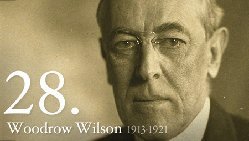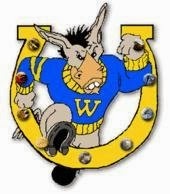Good 41º raining morning.
Yesterday for the first thing we had super pouring rain. Later it slowed to sprinkles. We topped at 62º.
Picture of the Day 😛
Interesting about the origin of pretzels.
A common origin story of pretzels is that they were created by a monk around 610 in Italy. According to The History of Science and Technology, the monk baked strips of dough that he folded into a shape resembling a child crossing its arms in prayer. He would give these treats, which he called “pretiolas” or “little rewards,” to children who had memorized their prayers. Unfortunately- and not surprisingly- there’s no documented evidence from the 600s to confirm this story. Other similar stories star a monk from France and bakers held hostage in Germany.
While any one of these stories might have some modicum of merit, what we do know for certain is that the earliest recorded evidence of pretzels appeared in the crest of German bakers’ guilds in 1111. Later, in 1185, an illustration of pretzels appeared in the Hortus Delicarum. The manuscript was compiled by Herrad of Landsberg at an abbey in Alsace, then a region of Germany. However, it’s very likely that pretzels existed long before either of these instances.
In a prayer book used by Catherine of Cleves in 1440, there was a picture of St. Bartholomew surrounded by pretzels. By this time, pretzels were considered a sign of good luck and spiritual wholeness—possibly due to the three holes in the common pretzel shape touted to represent the Holy Trinity at this point. The “good luck” connotation carried the pretzel to other holidays, including New Year’s Day, when in Germany children hung pretzels around their necks; pretzels hung on Christmas trees in Austria in the 16th century; and parents hid little pretzels on Easter for children to find, an early version of an Easter egg hunt. In Switzerland, the pretzel shape was used as a marriage knot, and couples would each pull on a side of the pretzel on their wedding day. The larger half brought prosperity to the marriage—it was kind of like a doughy wishbone tradition.
Pretzels have long been integrated into the Christian faith. By the 16th century, it had become tradition to eat pretzels on Good Friday in Germany, and Catholics once considered them the “official food of lent.” Earlier laws of the Church stated that only one meal a day was to be eaten during lent and the food couldn’t come from an animal. Yet another origin story says that pretzels were developed as a food for lent. Whether or not this is true, pretzels did become a popular staple during the holiday because it was easy to make and fulfilled the Church’s guidelines.
Pretzels made their way across the Atlantic with German immigrants who were later to be known as the Pennsylvania Dutch in the 1700s. Many pretzel bakeries popped up in Pennsylvania around this time, and Pennsylvania continued to be the seat of American pretzel production and consumption; around 80% of pretzels made in America are made in Pennsylvania today. While it’s estimated that Americans eat two pounds of pretzels in a year, pretzel consumption in Philadelphia is estimated to be around twelve pounds of pretzels per person per year.
Early pretzels were of the “soft” variety; hard pretzels are something of a relatively modern invention. However, contrary to popular belief, hard pretzels did not originate in 1600 when a baker fell asleep while he was tending his fire, burning pretzels to a crisp, as good of a story as that might have been. In 1861, Julius Sturgis created the first commercial pretzel bakery in Lititz, Pennsylvania. It’s believed that his factory was the first to develop hard pretzels. These crunchy, salty snacks lasted longer in an air tight environment than soft pretzels did, allowing them to be sold in stores far away from the bakery and kept on shelves much longer.
These attributes allowed their popularity to spread rapidly and hard pretzels are now one of the best-selling salty snacks in America, sandwiched between potato chips and popcorn. Soft pretzels continue to be a popular snack item as well with push-cart pretzel vendors prevalent in Philadelphia and New York. The push-carts follow a long tradition of pretzel street vendors—it’s believed that they first started appearing in the mid-1400s. Pretzel vendors also provided one of the first confirmed types of food delivery service, as they would go door to door selling their baked goods.
Today, pretzels are most popular in American and in Germany, where they are featured at Oktoberfest. In America, besides covered in salt, hard pretzels commonly come dipped in chocolate or yoghurt, while soft pretzels are served with mustard or liquid cheese. Different flavours are available all over the world, featuring nuts, seeds, and glazes—a long way from the simple dough pretzels that were commonly served religious purposes so many years ago.
From Mr. Food
Nothing is more welcoming than a big pot of soup at the end of a long day, and with our recipe for Potato Corn Soup you can whip up a bowl of comfort anytime you want. It takes just about 30 minutes to get this soup on your dinner table, which makes it weeknight-friendly, too!
- 4 cups chicken broth
- 2 potatoes, peeled and cut into small cubes
- 1/2 cup chopped onion
- 1/4 cup (1/2 stick) butter
- 1/4 cup all-purpose flour
- 1 cup half-and-half
- 1 cup frozen corn
- 1/4 cup diced cooked ham
- 1/4 teaspoon salt
- 1/2 teaspoon black pepper
- In a soup pot over high heat, combine chicken broth, potatoes, and onion; bring to a boil. Reduce heat to medium, cover, and cook 10 to 12 minutes, or until potatoes are tender.
- Meanwhile, in a small saucepan over low heat, melt butter; whisk in flour until smooth.
- Whisk flour mixture into soup until thickened. Slowly stir in remaining ingredients, mixing well. Simmer 5 to 10 minutes, or until heated through.
***The next time you make Potato Corn Soup, try serving it with some crusty bread (for soaking up every bit of the soup!) and a healthy green salad. We bet your whole gang will love this change-of-pace dinner.
Historically this date..........
1912 – The first municipally owned streetcars take to the streets in San Francisco, California.
.... LOVED riding those!!!
1958 – "Greatest Game Ever Played" – Baltimore Colts defeat the New York Giants in the first ever National Football League sudden death overtime game at New York's Yankee Stadium.
2000 – U.S. retail giant Montgomery Ward announces it is going out of business after 128 years.
...........sad sad sad day!! "Monkey Wards" a fav place to shop!
Montgomery Ward is the name of two successive U.S. retail corporations. The original Montgomery Ward & Co. was a world-pioneering mail-order business and later also a leading department store chain that operated between 1872 and 2001. The current Montgomery Ward Inc. is a national online shopping and mail-order catalog retailer that started several years after the original Montgomery Ward shut down.
And births this date include....
And births this date include....
1856 – Woodrow Wilson, American politician, 28th President of the United States, Nobel Prize laureate (d. 1924)
My High School named after him! Our school mascot was a Mule~! LOL.
Of course Sue Shewalter and I were inside
the mascot costume running around on the football field, but did anyone get a picture? No.
1934 – Dame Maggie Smith, British actress
1954 – Denzel Washington, American actor
1972 – Adam Vinatieri, American football player
All I know. Have a good Thursday. Ciao.
xo Sue Mom Bobo
Pledge of Allegiance Day on December 28th commemorates the date Congress adopted the “The Pledge” into the United States Flag Code.
Congress formally gave recognition for the Pledge of Allegiance on December 28, 1945. Francis Bellamy receives credit for writing the Pledge of Allegiance. The Youth’s Companion, a magazine for young people, first published it anonymously on September 8, 1892, under the title “The Pledge.” It was written in celebration of the 400th anniversary of the discovery of America.
In 1923 and 1924, the National Flag Conference inserted text of the pledge into legislation. Though modifications were made, the pledge remained nearly the same. At the same time, the conference didn’t designate it as the official pledge. In its original form, it read:
“I pledge allegiance to my Flag and the Republic for which it stands, one nation, indivisible, with liberty and justice for all.”
The small changes resulted in this version:
“I pledge allegiance to the Flag of the United States of America and to the Republic for which it stands, one nation, indivisible, with liberty and justice for all.”
On Flag Day in 1954, Congress added the words “under God” in response to the anti-Communist opinion sweeping the country during the Cold War.
PLEDGE OF ALLEGIANCE DAY HISTORY
Over the years, various attempts to create a national day honoring the Pledge of Allegiance have reached Congress. Others have failed. Around the country, Pledge Days, large and small, focused on the history of the pledge, the flag, and the Nation as a whole. We recount some of those efforts below. Interestingly, none of the exercises in patriotism point to a holiday taking place on December 28th.
Grade School Movement
In the 1970s, a movement took root aimed to set Pledge of Allegiance Day on April 30th. The significance of the date points to President George Washington’s inauguration on April 30, 1789. The third-grade students and their teacher, Mrs. Priore from Cleveland Hill School in Cheektowaga, NY, launched the campaign. Their campaign gained some ground with editorials and articles published across the country. However, their efforts never resulted in any continuing observance.
Congressional Designations
In 1982, Congress received a submission for National Pledge of Allegiance Day, but they took no action.
That same decade, the House reviewed a Joint Resolution to designate September 8, 1988, as Francis Bellamy Pledge of Allegiance Day. While they referred the document to the Post Office and Civil Service Committee for review, no further action resulted.
The following year, National Pledge of Allegiance Day returned. The House passed H.J.Res. 253 designating September 8, 1989, as National Pledge of Allegiance Day in commemoration of the first day “The Pledge” appeared in print. The resolution also called for the Pledge of Allegiance to be included in the 500th anniversary commemorative activities celebrating the discovery of America. The anniversary took place in 1992. That year, a commemorative stamp was issued.
In 2004, the Senate passed Resolution 378 designating June 14, 2004, as National Pledge of Allegiance as a way to reaffirm the United States flag as a unique symbol of the United States and its ideals.














